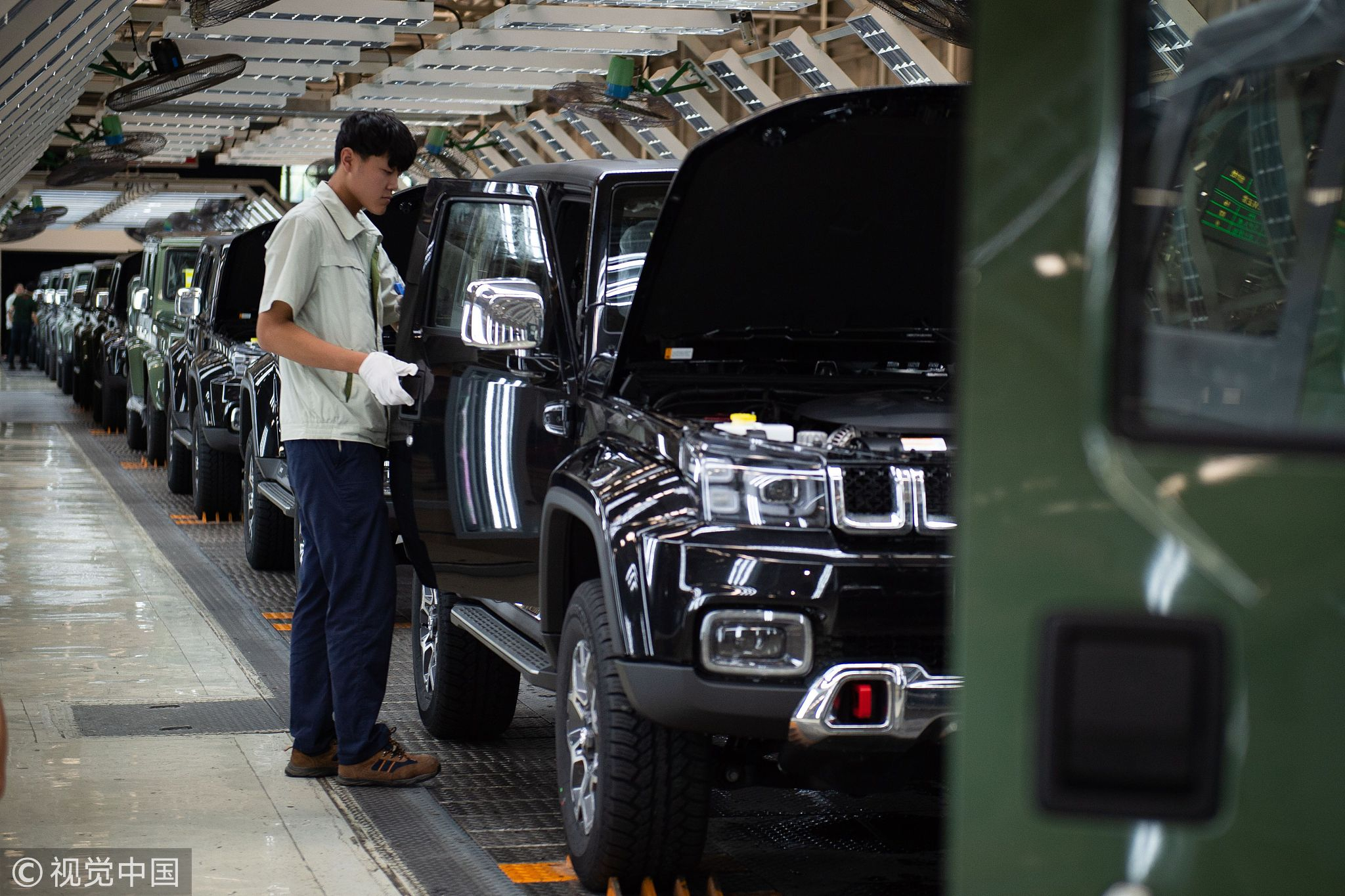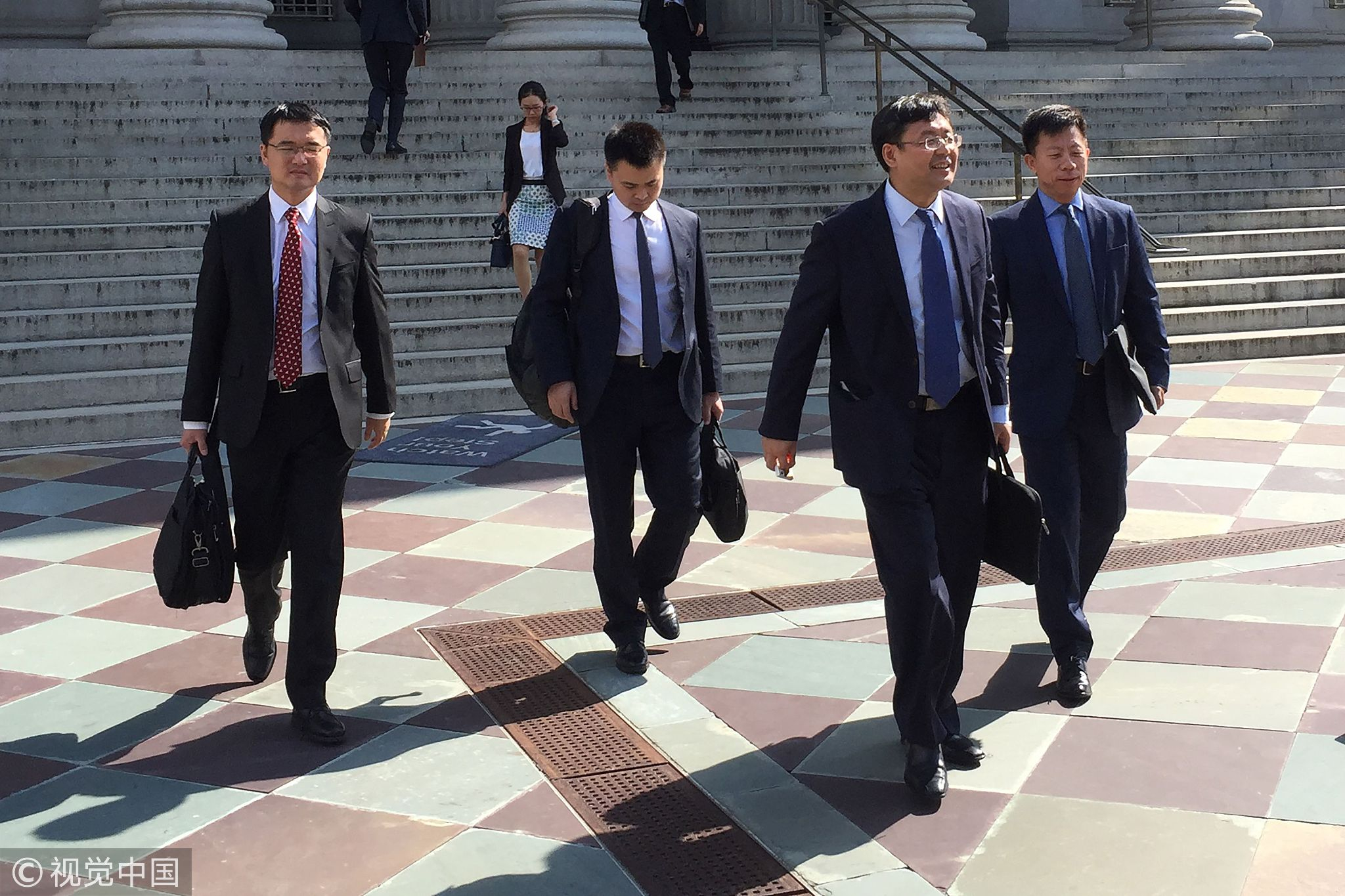Editor's Note: Cheng Dawei is a professor at the School of Economics, Renmin University of China. The article reflects the author's opinion, and not necessarily the views of CGTN.
An escalating threat-and-counter-threat trade war between the US and China has been played for several months. The Trump administration is preparing to activate tariffs on 200 billion US dollars worth of Chinese goods, hitting a broad array of consumer goods from handbags to bicycles to furniture.
The new tariffs, affecting roughly 40 percent of all Chinese exports to the US, would mark the biggest escalation of the trade war.
At this moment, the Trump administration invited China to restart trade talks. The last talk, between the mid-level US and Chinese officials on August 22 and 23, failed to reach an agreement. What will happen when two countries restart trade talks? I give three scenarios.

The closing numbers are displayed after the closing bell of the Dow Industrial Average at the New York Stock Exchange on September 12, 2018. /VCG Photo.
The closing numbers are displayed after the closing bell of the Dow Industrial Average at the New York Stock Exchange on September 12, 2018. /VCG Photo.
First, a lose-lose scenario, the mutual demise, otherwise referred to as the determination to lose, generally occur during periods of immense fluctuation.
Are we in that kind period right now? It seems both two countries have their own domestic problems.
In the US, populism, anti-globalization, and doubts over literalism have been rising. The internal division has widened the poverty gap.
For example, in 1993, Robert Crandall, a member of the Brookings Institution, systematically described how Rust Belt manufacturing in the United States was gradually shifting overseas and to the southern and western regions of the country.

A worker on an SUV production line on the BAIC (Beijing Automotive Group Co.) in Beijing on August 29, 2018. /VCG Photo.
A worker on an SUV production line on the BAIC (Beijing Automotive Group Co.) in Beijing on August 29, 2018. /VCG Photo.
The Rust Belt peaked in the 1950s, at one point accounting for as much as 45 percent of the United States' overall economy. During this period, over 50 percent of industrial workers worked in the Rust Belt and the unemployment rate declined annually.
Since its peak in 1979, US manufacturing employment has declined, mostly caused by higher manufacturing productivity. Manufacturing employment losses could be explained by low-cost production abroad, and a natural evolution in response to globalization. But in reality, job losses give President Trump an excuse to impose tariffs.
In China, growth is set to soften somewhat in 2018, as exports ease and investment slows. Infrastructure investment, a major growth driver in recent years, is projected to slow further.
All observed problems have been discussed by scholars, business people, but there is no policy solution yet. In a lose-lose scenario, unfortunately, two countries may be sucked into a protectionist spiral, unwilling to make concessions. In this case, both will be forced to deal with the poor consequences of not reaching an agreement.
The consequences we can see may include: upcoming global growth projection might be somewhat less enthusiastic, Chinese and Americans are highly likely to get hurt and have to pay more for buying thing, Chinese small business will be more difficult to survive, meanwhile, industrial workers in the Rust Belt can never get their original jobs back.

US Commerce Secretary Wilbur Ross arrives to the Diaoyutai State Guesthouse to attend a meeting with Chinese Vice Premier Liu He in Beijing on June 3, 2018. /VCG Photo.
US Commerce Secretary Wilbur Ross arrives to the Diaoyutai State Guesthouse to attend a meeting with Chinese Vice Premier Liu He in Beijing on June 3, 2018. /VCG Photo.
It isn't just an economic loss, it's also political, President Trump may lose American people's supports, especially with the 2018 midterm elections coming.
Second, a win-win scenario, both parties end up, at a minimum, within their target ranges. This could simply be reaching a fair middle ground that both parties benefit from.
There is only one consequence of tit-for-tat tariffs, that is lose-lose. The priority goal of the coming talk should be tariffs.
I think China has an incentive to negotiate, at least to stop the next round tariff using. For Trump's negotiation team, at least, they have to understand that tariffs are not the right weapon to fight, Americans who voted for Trump likely will feel pain if 200 billion US dollars tariffs become true.
That's especially true for low-income Americans who spend a higher share of their paychecks on goods and often buy the cheapest products, Americans that Trump often thinks of as his political base.

Members of a Chinese delegation led by the Vice Minister of Commerce and Deputy China International Trade Representative Wang Shouwen leave the building of the US Treasury after two days of talks with US representatives in Washington DC on August 23, 2018. /VCG Photo.
Members of a Chinese delegation led by the Vice Minister of Commerce and Deputy China International Trade Representative Wang Shouwen leave the building of the US Treasury after two days of talks with US representatives in Washington DC on August 23, 2018. /VCG Photo.
Then, if the negotiation can go to real trade issues, it will be better. It is necessary for two nations to create a rule-based economic environment, and focus on long-term issues.
Third, win more lose less scenario. Some American scholars have argued that the "winner takes all" design is unfair, and that the United States' preservation of its imperial status will one day be its downfall. This concept was coined the "backfire effect," where persistence is met with resistance. I have to say that win more lose fewer values are in relation to a realistic environment.
In a short time, President Trump may have the advantage to win more, since China is not so powerful like the States and China does not want to be involved into a trade war, more likely wants to negotiate.
China is prepared to ease market access for the US companies. If Trump gets those kinds of concessions, he would be able to say he was a winner.
However, in the long run, China will win more since China is too big to fall, Chinese leaders have stable political support domestically.
( If you want to contribute and have specific expertise, please contact us at opinions@cgtn.com )






